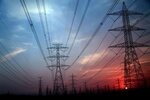News Release from windfair.net
Wind Industry Profile of
Taiwan Government Plans Hits Emerging Offshore Industry
Hardly a month went by last year without new success stories in the offshore sector in Taiwan. The government had comprehensive plans for the expansion of the power supply in this industry and wanted to support the establishment of a local supply chain with help from experienced foreign companies. In addition, there were lucrative feed-in tariffs. But at the end of the year the mood suddenly changed.
International companies such as the Danish offshore developer Ørsted, which had already signed contracts with local companies to build a supply chain, were forced to step on the brakes and wait and see what the government would set as the feed-in tariff for 2019. Now the decision is there - and the emerging Taiwanese offshore industry has gotten a full swing.
Ørsted explains in a press release the future plans of the Ministry of Economy: In the futre, developers have the option to choose between a 20-year flat tariff of approx. EUR157 per MWh or a tiered tariff of approx. EUR178 per MWh for the first 10 years and approx. EUR118 per MWh for the subsequent 10 years.
There will be a tiered production cap:
- 100% of feed-in-tariff for production up to 4,200 annual full-load hours (48% load factor).
- 75% of feed-in-tariff for production from 4,200 to 4,500 annual full-load hours (from 48% to 51% load factor).
- 50% of feed-in-tariff production above 4,500 annual full-load hours (above 51% load factor).
Martin Neubert, Executive Vice President and CEO, Ørsted Offshore, expresses his disappointment:"We take note of the 6% tariff reduction compared to the 2018 tariff as well as the introduction of a cap on annual full-load hours. The production cap has material adverse impact by preventing an optimal and efficient use of the wind farm. In addition, it puts far-shore projects at a disadvantage versus the near-shore projects which remain unaffected by the cap.”
This has consequences for the suppliers, as Ørsted wants to check the economic viability of some of the contracts it has already concluded with them with regard to the new tariffs: “We will now collaborate closely with the supply chain to mitigate the adverse impacts from the production cap and the reduced feed-in-tariff with the objective of making the projects investable.”
Ørsted's two planned major projects, Changhua 1 and 2a, are faced with exceptionally high costs associated with building a local supply chain on a large scale, expanding the onshore grid infrastructure and constructing, operating and maintaining offshore wind farms under these difficult site and weather conditions.
It will then be decided whether the construction of these two projects is still worthwhile.
- Source:
- Ørsted
- Author:
- Windfair Staff
- Email:
- press@windfair.net
- Keywords:
- Ørsted, Taiwan, offshore, government, tariff, production cap, supply chain, local, developer



























